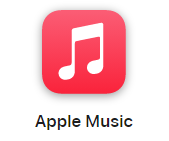Microsoft Azure is likely something you’ve heard of in passing but not realised it might be impacting your everyday life. Here’s our clear and concise explainer of just what the cloud platform is.
It may seem like AI is the key buzzword for Microsoft right now, with each passing Windows or Surface presentation focusing on that technology, but ‘cloud’ was the previous flavour of the month. It isn’t gone as a frequently used term, far from it, and it works in tandem with AI too.
Microsoft offers a lot of different cloud services and most of it is powered by Azure. Let’s dive in, these are the all-important details on Azure.
What is Microsoft Azure?
Microsoft Azure is a cloud computing platform that offers a wide range of services to businesses. The cloud services include more than 200 products, all of which you can build, run and manage using Azure. You can manage the applications through multiple clouds and on-premises.

Apple Music
Apple Music gives you access to over 100 million songs and 30,000 playlists, ad-free. Listen online or off, across all your devices, and hear sound all around in Spatial Audio with dynamic head tracking. You can now try 1 month for free!
- Apple
- Get 1 month free
- £10.99 p/m
Azure operates through large-scale virtualisation afforded by Microsoft’s data centres around the globe. The more than 200 products include website management, identity verification, communication services, messaging platforms, artificial intelligence (AI), Internet of Things (IoT) and much more.
Microsoft Azure is an open-source platform, allowing users to integrate their own tools, languages and frameworks how they see fit. Azure’s solutions are used across healthcare, government, financial, retail, manufacturing services and more.
When compared with rivals, Microsoft touts Azure as being the “only consistent hybrid cloud” and argues it offers the best levels of developer productivity and multi-layered security. It also touts that Amazon Web Services (AWS) is “five times more expensive” than Azure.



